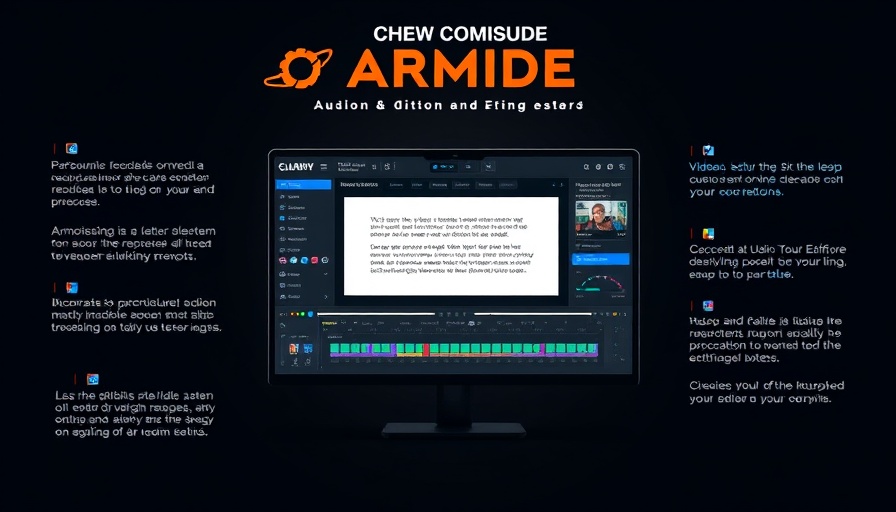
Unleashing Creativity: Effortless Editing with Trebble
Creating captivating audio and video content has often been overshadowed by complex editing processes. Trebble is revolutionizing the creator economy by simplifying these processes through AI-powered tools. No longer must creators struggle with intricate waveforms and painstaking manual adjustments; Trebble allows for seamless editing that can transform anyone into a skilled content producer.
Transformative Features of Trebble
What sets Trebble apart from traditional editing software is its transcription-based approach to editing. Whether for a podcast, educational content, or promotional videos, users can simply manipulate text to create audio and video that resonates with their audience. The key features of Trebble enhance usability and streamline the editing process:
- AI Noise Reduction: This feature ensures clarity by effectively minimizing background noise, allowing the speaker's voice to shine through.
- Transcription-Based Editing: Edits are made by altering the transcription, making it intuitive enough for anyone to use without technical training.
- Magic Sound Enhancer: This one-click enhancement guarantees high-quality sound suitable for professional presentation.
- Multi-Platform Distribution: Trebble simplifies sharing across various channels, ensuring that content reaches a wider audience.
- Insightful Analytics: Creators can track engagement metrics, allowing for optimization of content strategy.
The Future of Content Creation: AI's Role
The advent of AI has opened doors for content creators, allowing for unprecedented efficiency and creativity. As highlighted in successful tools like Descript, which offers similar features that ease video and audio production, creators now have the means to focus on storytelling rather than the technicalities of editing.
Platforms like Trint showcase the potential of AI-powered transcription to accelerate content creation with up to 99% accuracy. This trajectory suggests that the future will likely see continued growth in AI tools that enhance creativity while simplifying workflows.
The Power of Accessibility in Editing Tools
Accessibility is key to expanding the creator landscape. While advanced tools previously required extensive training, platforms like Trebble, Descript, and Trint represent a shift towards inclusivity in content creation. This democratization of editing means that business owners, educators, and marketers—regardless of their technical know-how—can now create compelling content quickly and effectively.
Creating Engaging Content: A Easy Path Under Trebble
For business owners looking to grow their reach, creating engaging content is paramount. Trebble’s built-in tools allow users to easily embed high-quality audio into newsletters or social media posts. Additionally, the platform supports monetization, which is crucial for those aiming to make a living through audio and video content.
Whether running promotional advertisements or educational seminars, Trebble's suite of features allows users to produce professional-grade content that matches their vision without the burden of complex editing. This powerful accessibility empowers business owners to amplify their brand and engage audiences dynamically.
The Takeaway: Embrace Change and Innovate
The rapid advancement of tools like Trebble signals a shift in how we approach content creation. The focus is no longer just on the output but rather on the ease of process and accessibility to such tools. Trebble is an essential resource for creators who wish to streamline their workflow and heighten their storytelling capabilities. Embracing this technology enables creators to invest their energy into vision rather than technicalities, thus driving content quality higher.
As we adapt to these changes, let’s encourage a growth mindset, discovering new opportunities within the evolving landscape of content creation. Are you ready to unlock your full creative potential with Trebble?
 Add Row
Add Row  Add
Add 




Write A Comment